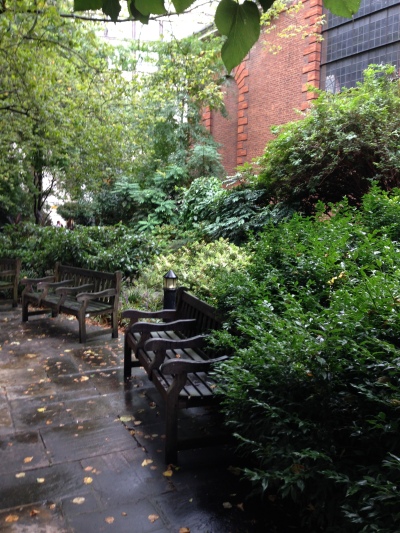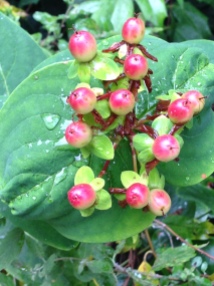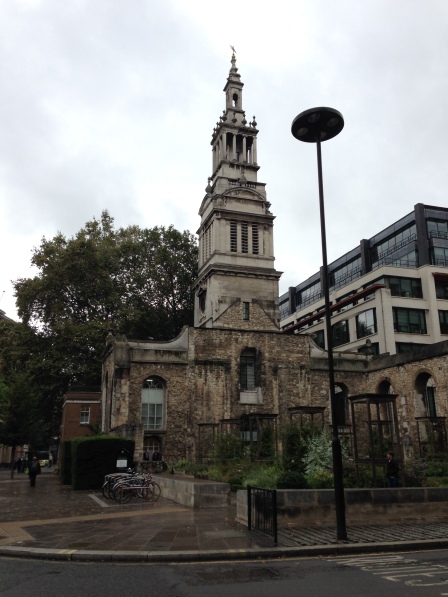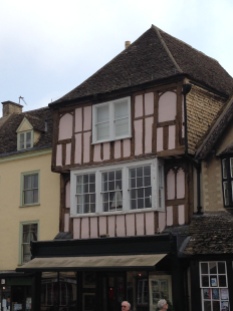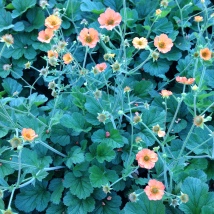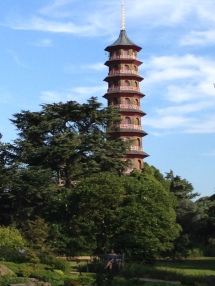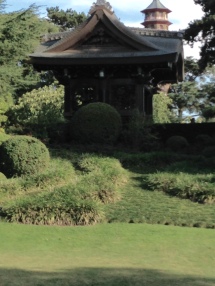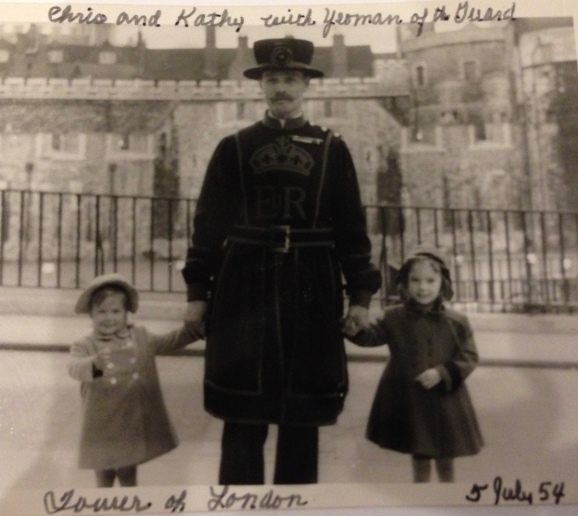The months of September and October are typically times where EVERY day could be a gardening day if the weather has cooled off enough to allow it. A well attended autumn garden results in a garden with far less necessary spring work. It is a lot more fun to put plans you have made over the winter into action as soon as early spring breaks than it is to know that there are days of yard clean-up required before you can put trowel to the ground with new plant material.
Thursday and Friday were beautiful days to get started on my autumn bed to-dos. With not much sun and highs in the 70s, I made tremendous strides in the smallish garden beds which flank my front walk and the broad curved border on the west side of the yard. The word ‘reset’ is defined as ‘to set again or anew’, in other words to go back to the beginning — affording the chance to move forward again.
By early fall, woody perennials–especially those which thrive in hot and dry conditions–have become brambled, twiggy masses. The iris need dividing plus a foliage trim back and the long suffering roses are starting to show spider mite and heat damage. Because I garden in a temperate winter area, the autumn cut back or clean up often results in one more round of fresh foliage and blooms. The new leaves have a chance to harden off before the possibility of frost looms and I have reduced the size of the plant enough to be more manageable through the winter. In the case of the woody perennials and the roses, the cut back requires the discipline to cut off perfectly good flowers and foliage for the reward of extending the bloom season a bit. For the woody perennials such as lantana, some salvias, rosemary and lavender you avoid that inevitable mess of a hard freeze reducing a huge plant to a soggy mess. Many of the woodies have hollow stems. If you prune them back AFTER the cold has arrived the hollow stem tends to accumulate water and a hard freeze will then decimate your plant. A bonus for me in my snail ridden beds is that the cleaning up and clearing out exposes the bases of the large rocks where snails winter over and I have the opportunity to bait heavily one more time (less effective when the beds are lush and the dirt mostly covered with plant masses.)
Gardening guides instruct you to dig and divide bearded iris after they bloom, typically in mid-July. Our long growing season and unmercifully hot summer make that timetable challenging. In areas of longer winter many bearded iris (even those categorized as ‘early’) do not even start to bloom until mid-May. I frequently have my early varieties blooming in mid-February and those classified as late bloomers totally finished by mid-May. My remondant (repeat blooming) varieties bloom all fall, winter and early spring then rest in the summer. With blooms finished by June the foliage looks pretty ratty all summer! I dig and divide in the fall giving the divisions a chance to settle in through the mild winter. The iris seem to end up last on my list and I always have at least one area that I let go too many years and then lose the whole group.


The last few years of significantly more restricted outdoor watering has diminished my once pretty spectacular colonies of iris. I am hanging in there for better times and knowing that iris are fairly resilient through drought times gives me hope!
The photos below will show you that the woody salvias have been reduced in size by about 2/3rds, the roses deadheaded with diseased foliage removed, the aster sprays cut back to the new foliage emerging from soil, the iris cleaned up and trimmed and all the spurge and oxalis dug up. I rescued some great iris out from under the pale blue plumbago and replanted them in more open areas.
I finish each bed/border section by spreading both Preen for pre-emergent weed control and snail bait. I am undecided about winter annuals at this point but know that the beds are ready for them if I want to add any. Over the next couple of weeks I’ll work every section of both the front and back gardens in this fashion. Once everything is done I will order a load of fine mulch and top dress each area. Late in November I’ll strip the rose foliage to nudge them into dormancy, following up with the hard pruning in late January.
A quick update on our grass removal project–the large driveway circle bed is almost empty of it current plants. Digging is more than challenging due to the roots of the two mature and very large crape myrtle trees. Today, we were able to till and clear about 25% of the area which used to have lawn, adjusting the grade a bit as we worked. I will focus on larger scale evergreen shrubbery on the street side–possible Wheeler’s Dwarf Pittosporum en masse. The west exposure may get a swathe of tough mounding drift type roses and the shady north side is still a mystery to me!
The two smaller areas from which we removed grass are doing really well! I love the vibrancy of the Double Pink Knockout roses underplanted with lavender lantana. The combo has withstood the summer heat quite well with only moderate water. With the upcoming cooler weather allowing the plants to really tuck in well I am cautiously confident of success. You can see this little bit in the lower left photo of the four above. The second area got a ‘Natchez’ crape myrtle which has given us a few worrisome days after we put it in the ground on the day that was 109! About 3 weeks ago I underplanted the tree with Convolvulus mauritanicus ‘Moroccan Blue’ and they are doing really well. I’ll keep all y’all posted on the progress of all these grass-free endeavors!

The Renae tree roses are loving this bit of cooler weather and are putting on sprays of beautiful new pink flowers. They will get just a bit of clean up before the spring but I am letting them do their thing for now!



















